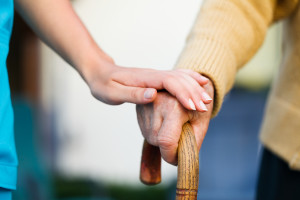Wandering poses one of the greatest safety risks for a senior with Alzheimer’s disease. There are over 5.5 million people in the United States with the disease and more than 60 percent of those affected will wander at some point through the progression of the disease. It’s a problem that will continue to grow.
Unless a cure is found, an estimated 16 million people will suffer from Alzheimer’s by the year 2050. If the ratio continues nearly 10 million people may potentially experience wandering. This is a major problem that confronts the entire world.
According to the Alzheimer’s Association, some of the signs that indicate that a person may wander are the following: returns home from a regular walk or drive later than usual; attempts to fulfill former obligations such as going to work; wants to go home even though they are already home; is restless, paces or makes repetitive movements; has difficulty locating familiar places like the bathroom, bedroom or dining room; asks about current or past friends and family; acts as if doing a hobby or chore but nothing gets done; appears lost in a new or changed environment. This seemingly pointless activity usually does have a reason. It is basically an attempt to communicate after language skills have been lost.
Although it is impossible to completely prevent wandering there are some steps that can be taken to minimize its occurrence. Install locks in doors, windows and gates. Add a hidden bolt lock higher or lower than the line of sight. Paint doors the same color as the walls so they become less visible. Hang curtains in the windows that match the color on the walls. Install alarms set off by motion detectors and warning bells on the doors. Provide a fence around the property so the person can enjoy the outdoors without the fear that they may walk off the property unescorted. Posting stop signs in restricted areas and putting a photo of the individual in his or her bedroom, as well a bathroom sign may help them navigate their home. Watch for patterns if wandering occurs at the same time every day, it may help to plan a closely supervised activity at that time. As Alzheimer’s disease advances the patient may become frail and predisposed to falls. For that reason, living spaces will be safer if throw rugs, electrical cords, and other potential trip hazards are removed.
If a person exhibits the early signs of wandering, a number of steps need to be taken to insure safety.
Make sure the person always carries an ID card or bracelet. Let neighbors and local police know the person with Alzheimer’s tends to wander and ask them to call you immediately if the person is seen alone. Placing labels with identifying information inside of garments is also a good idea. Keep the car keys out of sight since a person could drive off and hurt themselves and others. Consider having the person wear an electronic tracking GPS device that will help identify his or her location. Never leave a person with Alzheimer’s who has a history of wandering unattended.
If your loved one does wander call 911 immediately and notify police that a person with Alzheimer’s is missing.
The Alzheimer’s Association has a program called Medic Alert & Safe Return. It is designed to help identify people who wander and return them to their caregivers. For a $40 registration fee you receive an ID bracelet, labels for clothing, ID Cards, registration in a national data base with emergency contact information and a 24 hour toll free number to report someone who is lost. You can register someone by calling 1-888-572-8566.
Care giving for a person with Alzheimer’s disease is a difficult and stressful responsibility. Regular relief for the primary caregivers should be an important part of the overall care plan for an individual with Alzheimer’s disease.



